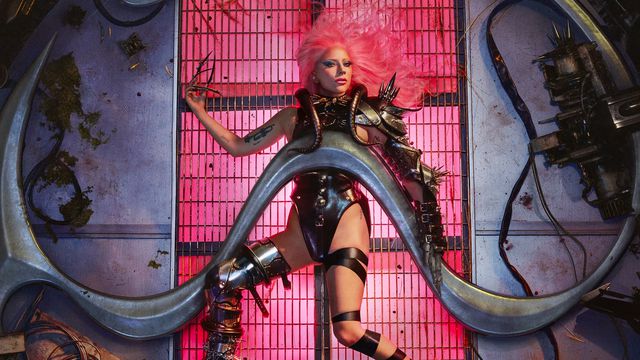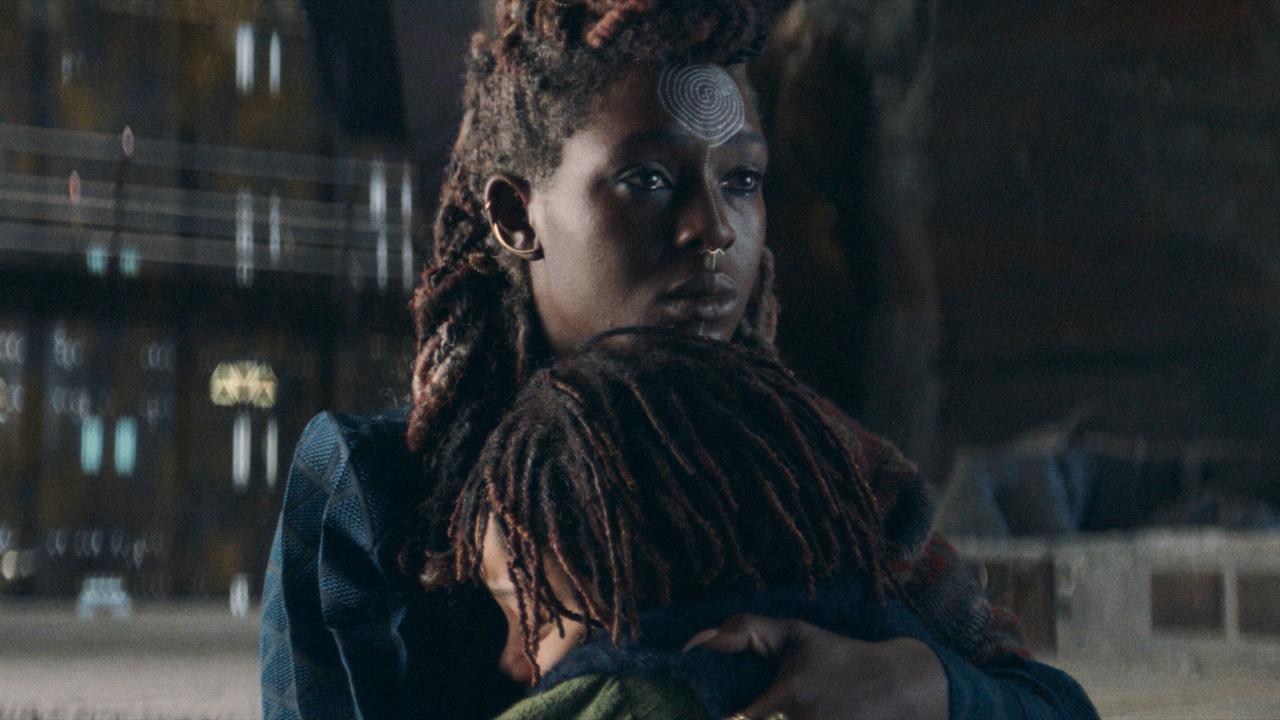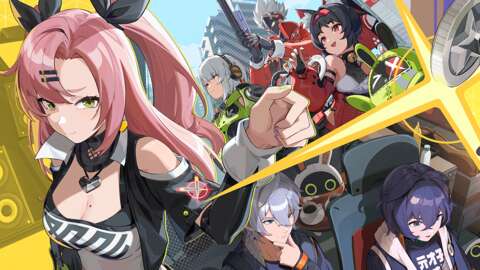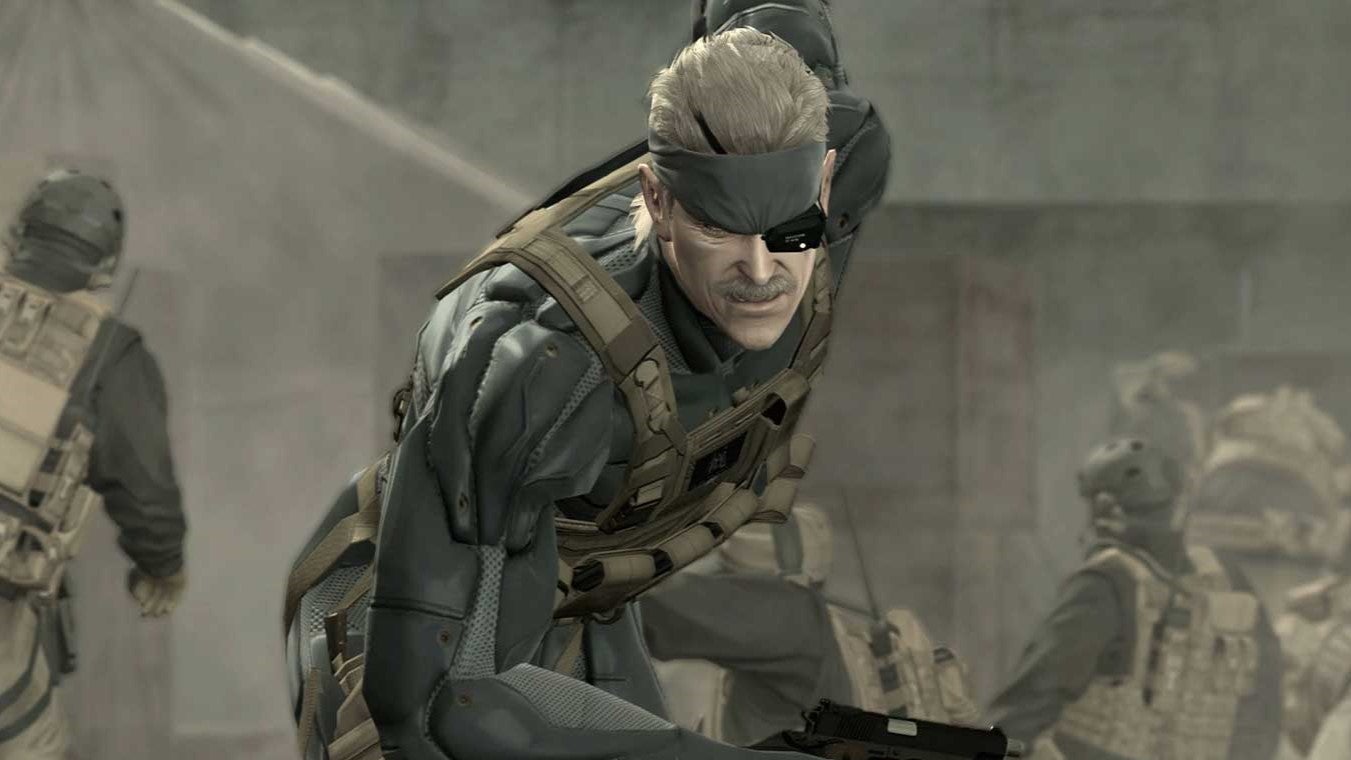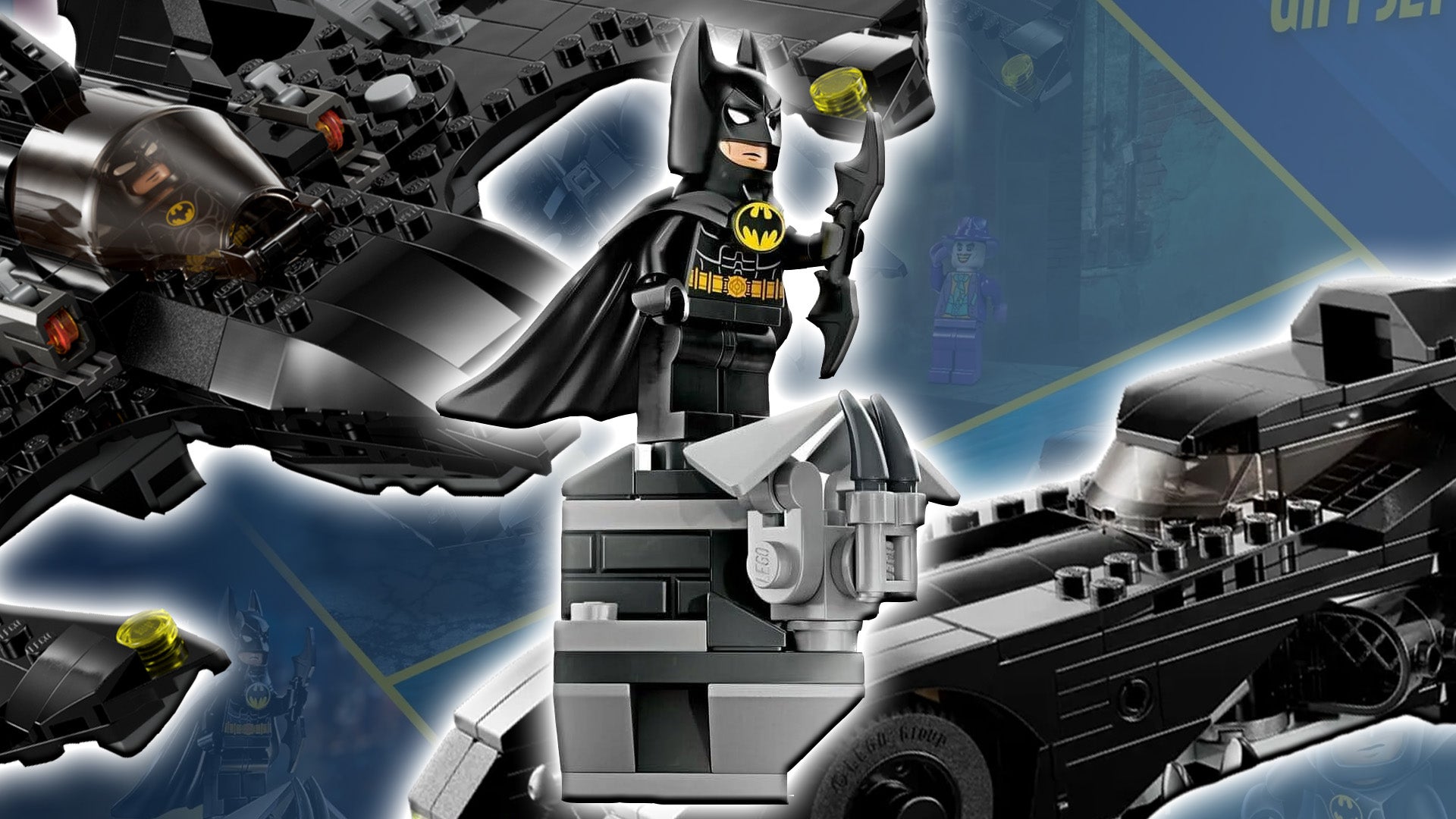Adi Shankar is known for producing all kinds of projects, from 2012’s Dredd to 2011’s The Grey, but he officially solidified his credentials in the mainstream gaming sphere with Netflix’s adaptation of Castlevania, on which he served as showrunner. When that anime debuted in 2017 – before the days of Arcane, HBO’s The Last of Us, or even Pokemon: Detective Pikachu – the so-called “video game adaptation curse” was still on full display, and against all odds, Shankar bucked the trend.
Fans and critics alike wholeheartedly embraced the animated take on Konami’s beloved game series, and even IGN called it the “king of the (admittedly short) video game adaptation hill” in our 2018 review of Season 2. Its success led to four seasons and a recently released sequel series in Castlevania: Nocturne, and Shankar got more video game-based projects after that, including a highly anticipated Devil May Cry anime on Netflix.
The next one, however, Netflix’s Captain Laserhawk: A Blood Dragon Remix, is a bit of departure from Castlevania. Whereas the latter was a faithful adaptation of the games, Captain Laserhawk is a new story that just so happens to contain a broad mishmash of Ubisoft IP, from Rayman to Assassin’s Creed to Watch Dogs to Beyond Good and Evil, while being loosely based on Far Cry 3: Blood Dragon. Shankar probably got the gig by proving his mettle on Castlevania – right?
“No,” Shankar tells IGN in a recent interview. “...They (Ubisoft) kept saying, ‘No, this is Bootleg Universe.’ It was the viral short films that created this opportunity.”
That Bootleg Universe that Shankar is referring to is something he’s been doing since 2012, a series of short films that lean heavily into satire and contain everything from an rated-R take on the Power Rangers to a particularly dark epilogue to the Pokemon anime. What began as a YouTube channel of unauthorized short films became Shankar’s production company, most recently producing his superhero satire series The Guardians of Justice for Netflix.
“What it effectively communicated to the buyers and Ubisoft and everyone else is, they're like, ‘This guy knows how to take things and kind of mix them and remix them and rejig them into a thing.’ That's the essence of it, but different,” Shankar says. “Now I do that intuitively. So I'm not doing a math equation, but I've now retroactively learned that that is actually what created the ecosystem for this opportunity to become a TV show.”
Still, it’s not as though Castlevania doesn’t deserve a little credit. After it blew up, Shankar felt as though “a pinata had been hit and it was going to start raining goodies from this pinata.” Basically, we were going to start getting a lot more video game adaptations (he wasn’t wrong).
But, Shankar says, the question he was asking himself wasn't how to clone that success - it was how to move on to the next step.
“A lot of the things that I was speaking on on Castlevania, especially when I was out promoting it, was making something authentic for the fans,” he says. “In a way, Laserhawk was a reaction to that, where I'm like, ‘okay, let's jump to version 3.0 [of video game adaptations]. What's version 3.0?’ “
While 2.0 would be something of a shared universe, he explains, he compares his 3.0 to something like DC’s Elseworlds, which has various authors doing their own standalone takes on that universe. That, roughly, is where Captain Laserhawk came from, and Shankar pitched it to Ubisoft a month after Castlevania debuted in 2017.
Luckily, he was already working with Ubisoft, but he fully expected them to say "no. Fuck off. Go away. This is insane” – and it’s easy to see why he might think that. Captain Laserhawk takes some big swings, and without delving into spoiler territory (though you can check back on IGN after the Oct. 19 debut for some of that), we can at least tease that there’s a newscaster Rayman with a bit of a dark twist, Assassin’s Creed’s Altaïr seemingly reimagined as a bullfrog, and a psychotic take on the Power Rangers that’s a spoof on Rainbow Six. Shankar, too, seems to be in a bit of disbelief that Ubisoft has had “nonstop support for it” since they OK’d it.
But even Ubisoft seemed to anticipate that, as they took the series to buyers, there’d be some questions about if the game publisher would even allow this stuff. So, as Shankar jokes, they sent him something of an “adult in the room.”
“One of the owners of Ubisoft actually came with me to every network we talked to about the show, to literally sit in the room and say, ‘Yes, he can do all of this. Yes, we are going to allow that,’ ” he says. “Because you get in the room with the head of a network and they're like, ‘Okay, dude. You're kind of like this renegade guy. You do weird shit sometimes. You don't always play by the rules. I'm sure they're going to let you get away with this, uh-huh. I'm sure.’ “
But, well, they did, and with Ubisoft and Netflix on board, Captain Laserhawk was officially born.
Four Different Stories in One
For all we’ve talked about the Ubisoft of it all, at the center of Captain Laserhawk is, well, a love story – a love story between two original characters, in fact: the eponymous Captain Laserhawk (voiced by Nathaniel Curtis) and Alex Taylor (voiced by Boris Hiestand). Everything else, he says, “was built around that,” but he takes care to clarify the creative process, as frequently nonlinear as it can be.
“Part of my process is, I'm basically doing four different things,” he says. “I'm working on four different projects only to realize at a certain point that they're actually one project, if that makes sense. I'm telling this love story and then there's also this dystopian universe about X, Y, and Z, and then there's also these other characters, and you literally think of them as four different projects only to realize, oh, this is actually all one story. One world.”
As for Laserhawk himself, Shankar’s goal was to basically “deconstruct the archetypal Western action badass hero.”
“He's not on a typical journey that a hero from that archetype would be on,” Shankar says. “He's in more of a journey of self-discovery than he is of punching the bad guy, ultimately – although he does punch the bad guys.”
Laserhawk aside, there’s a lot covered in Captain Laserhawk beyond Laserhawk and Alex, from the dystopian city setting of Eden to the Suicide Squad-like crew characters like Beyond Good and Evil’s Jade and Pey'j are forced to join, in addition to how characters like Watch Dog’s Marcus Holloway fit into it all. And then there are larger ideas he’s tackling, too, for which Shankar cites tons of influences.
Sure, it’s partly satirizing big tech, and elements of popular culture (as mentioned, you do have a psychotic crew of basically Power Rangers, after all). But Shankar also points to his upbringing: born in India, moving to Hong Kong when it was a British colony, being there when China took over, and then moving to Singapore. “So I saw a lot of different frameworks of government, of society, of power, all of it.”
“And as a kid, I was drawn to Aldous Huxley, George Orwell, Brave New Worlds, 1984, Animal Farm,” he adds. “I was drawn to these effective – these metaphorical deconstructions of society.”
There certainly is something deeper in Captain Laserhawk, particularly in the dystopian setting in which it takes place. But there’s also, of course, a sense of humor and absurdity to it – hell, ask Shankar why he decided to make his take on Assassin’s Creed a frog, and he says “I think frogs are just cool, you know what I mean? I feel like they're taken for granted in a lot of ways… I could talk about frogs for hours.”
The juxtaposition between the deep and the silly, Shankar says, is wholly intentional. What he wanted to achive with Captain Laserhawk "is a Saturday morning cartoon that exists in shades of gray." "It's like Breaking Bad as a cartoon," he adds.
If you haven't gotten this idea already, there’s a lot covered in Captain Laserhawk’s six episodes, which range between 20 and 30 minutes each. It moves, Shankar acknowledges, with “breakneck speed pacing,” similar to The Guardians of Justice, and that extends to its fast-moving, colorful, and frequently shifting animation style.
Bobbypills is the studio that handled the animation, and Shankar credits them a lot with the visual style, in addition to creative director Mehdi Leffad. There’s a “consistent inconsistency” to it, as Shankar calls it – one second you’re watching a stylish, kinetic action anime, and then next, you’re watching a side-scroller, or a dating sim, or something you might see on the PS1. It’s a kind of “consistent inconsistency” that Shankar did on Guardians of Justice, and he wanted to do it again on Captain Laserhawk, effectively baking the changes into the script.
“I had a conversation with Mehdi, the director. And once he got what I was going for, and once he knew that – ‘hey, these things could actually, they work,’ “ he says. “They (Leffad and Bobbypills) made all the choices on when we're shifting into what style we're shifting into and make this just a love letter to video games in general. The idea was to make this a love letter to gaming in general, not just cyberpunk.”
For all the juxtapositions in Captain Laserhawk - from the various animation styles to the disparate tones it's juggling - there's a bit of that in just talking to Shankar about it, too. On one hand, he's confident in his vision, and when I ask if he's nervous if fans of the games will be upset about any of the choices he's made, he somewhat brushes it off: "I just assume people are always mad at me constantly, about just everything."
"People were mad 10 years ago. They're like, 'Why does this guy wear makeup? He wears face painting, fuck. You're not the Crow, dude.' Well, maybe I am, maybe I'm not," he jokes.
But it's clear he wants to see what people will think of it, too. Since I'm one of the first people he's talked to who's watched the series, he'll oscillate between that confidence and prodding me for my own thoughts, to see if this experiment of his worked, maybe with more curiosity than insecurity: "Do you like the show? Do you think other people will enjoy it?" (For what it's worth, he also catches himself switching between these two modes, and laughs at himself for it.)
What comes across, though, is that this is a world that Shankar obviously cares a lot about. When asked if he would want to tell more stories in it, he's cautious to not say anything too committal - but, essentially, he's lived in this universe for the past six years. Of course there's more in his head than what we'll see in the episodes that debut next week.
“This is an entire universe that exists,” he says. “And so what you're seeing with the show is six episodes of this universe. And I've thought through this. I mean, not just thought through it, I live it. I live it. So do I know more of what happens in this world? Yeah.”
Captain Laserhawk debuts on Netflix on Oct. 19.
Alex Stedman is a Senior News Editor with IGN, overseeing entertainment reporting. When she's not writing or editing, you can find her reading fantasy novels or playing Dungeons & Dragons.
